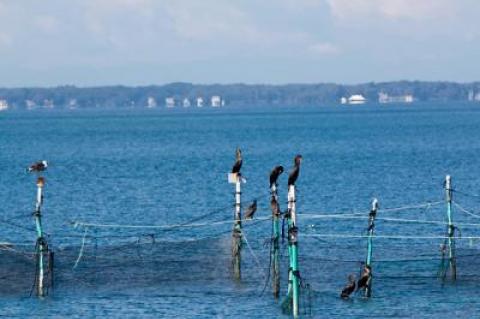September is not only back-to-school month, it is also the end-of-harvest month and fish-after-fish month. It is the time of the great migration: birds, fish, whales, and even butterflies and darning needles are winging it south.
Outdoors
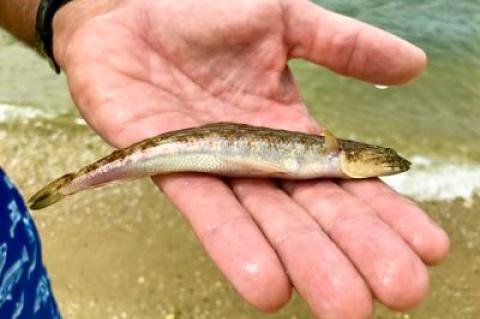 Young of the Year
Young of the YearIt’s not a national holiday, but Tumbleweed Tuesday, the day after Labor Day, passed by us a few weeks ago.
Every resident of Southampton Town knows about the notorious sandpit with the euphonious name Sand Land situated at the end of Middle Line Highway next to Golf at the Bridge in Noyac.
t was the wise Greek Archimedes who in 250 B.C. formulated the principle of buoyancy and that a chunk of something that drops into the sea and floats displaces its own mass. If it sinks below the surface, it displaces its own volume. When a glacier slides off a mountain face into the ocean, it displaces its own mass, and the sea rises proportionately. As it slowly melts away and becomes one with the sea, the sea rises a bit more.
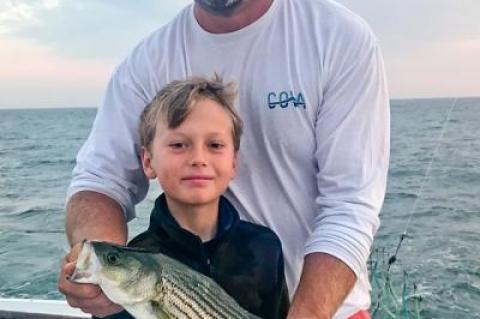 Rust Tide Returns
Rust Tide ReturnsIt was bound to happen. Overwarm water temperatures this summer, backed by the unpredictability of Mother Nature and other factors, has resulted in an outbreak of a nitrogen-fueled rust tide in a number of locales, including parts of Three Mile Harbor, Noyac Bay, and Little Peconic Bay. The bloom has also been widely seen in other waterways on both the North and South Shores of Long Island in recent weeks.
 Nature Notes: Proceed With Caution
Nature Notes: Proceed With CautionNature has many survival tricks up its sleeve when it comes to the possibility of being eaten. `We all know how the monarch butterfly is able to escape predation and fly 100 miles or more in a day during its annual migration without suffering a single molestation.
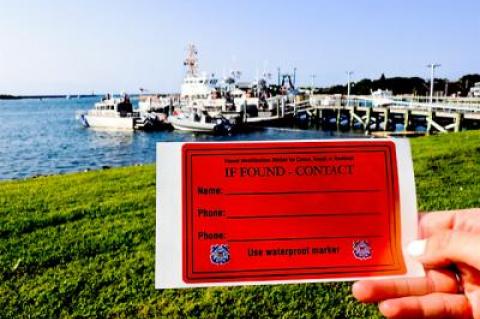 ‘If Found’ Stickers Help
‘If Found’ Stickers HelpSummer is not over yet. In fact, the next few weeks may be among the best of the year for getting out on the water in small paddle craft like canoes, kayaks, and stand-up paddleboards. But storms and high winds can quickly turn a fun excursion into a dangerous situation, separating paddlers from their craft.
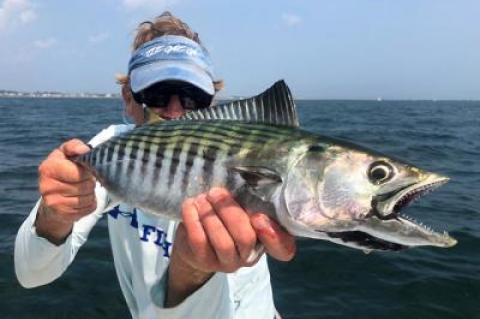 A Break in Fishing Doldrums
A Break in Fishing DoldrumsWhen boating or sailing, there are times as the season moves along that doing the same thing over and over becomes downright boring. The same is true for the pursuit of fish. I simply get burned out when chasing the same species day after day.
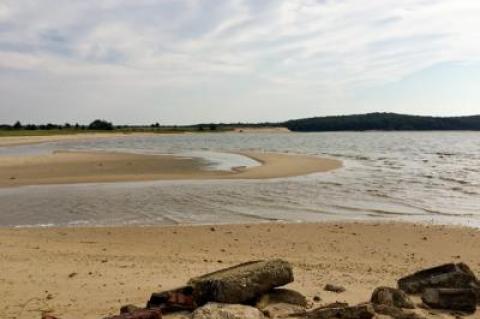 Nature Notes: Shifting Sands, Lands
Nature Notes: Shifting Sands, LandsThe recent to-do about Cartwright Island raises some interesting questions. We are sometimes prone to think of the present as the past, East Hampton today has always been, Southampton has always been, Lake Montauk has always been the way it is, etc., etc., etc. But in fact things, including our local landmasses and their surrounding waters, are fluxing every minute, during the day when we can see the change and at night when most of us are sleeping. So it is with the contours of the South Fork’s north and south coastlines.
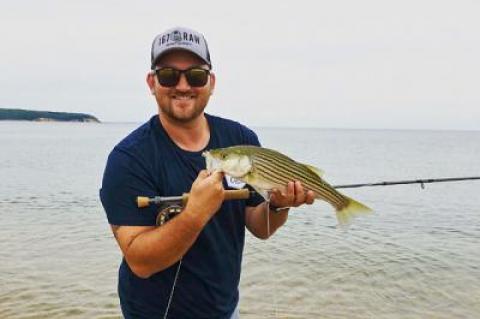 Feeling Hot, Hot, Hot
Feeling Hot, Hot, HotHands down, dawn is my favorite part of the day. No matter the season, I love to get up early and take it all in.
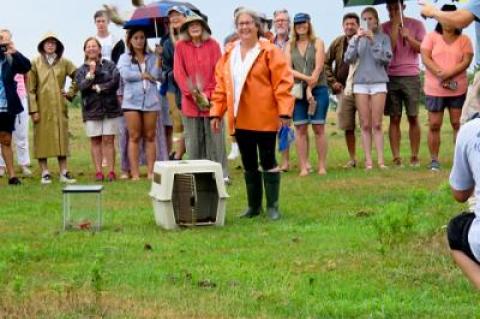 Nature Notes: Return of the Bobwhite
Nature Notes: Return of the BobwhiteOn Saturday the rains came, but it didn’t spoil the first ever release of bobwhites in the hamlet of Montauk by the Third House Nature Center group. Juvenile bobwhite after bobwhite fluttered off into the green tapestry of Montauk County Park atop the hills east of Lake Montauk. Such release of this quail species, native to most of the United States, but not common anywhere, could be the beginning of the comeback of it not only in Montauk, but in the rest of East Hampton Town as well. Two more release days are planned by fall in this five-year program.
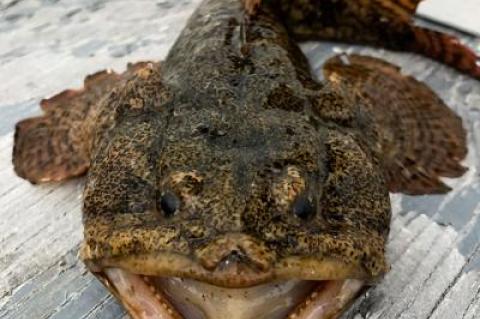 Toadfish in Outer Space
Toadfish in Outer SpaceSharks are hot. As in the past few summers, shark sightings seem to be capturing a lot of headlines and attention of late. Ever since Steven Spielberg put the toothy fish on the silver screen several decades ago, the mystique and fascination continues to grow.
 Clamoring for Surf Clams
Clamoring for Surf ClamsLast week’s unusually turbulent summer weather, which included extended wind gusts to over 30 miles per hour on several days mixed in with a few tropical downpours, certainly stirred up our local waters. Rip current warnings were posted up and down the coast for most of the week and weekend. It was best to stay out of the drink most days.
This column is about a failed plan to construct a failed recharge basin. It is another Humpty Dumpty story about engineers, town councils, town attorneys, contractors, and the like designing and trying to build a recharge basin to trap runoff water from a farm field in East Hampton on a site along Route 114 in 2010.
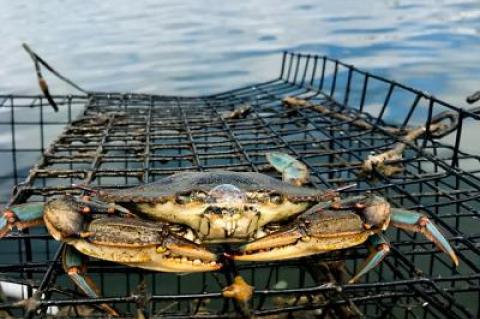 Blue Crab Bliss, Bigeye Bite
Blue Crab Bliss, Bigeye BiteFor those who have followed my adventures in trapping lobsters over the past few months, I must freely admit that I have an even greater fondness (and appetite) for a rather close cousin of that popular staple of the summertime clam bake.
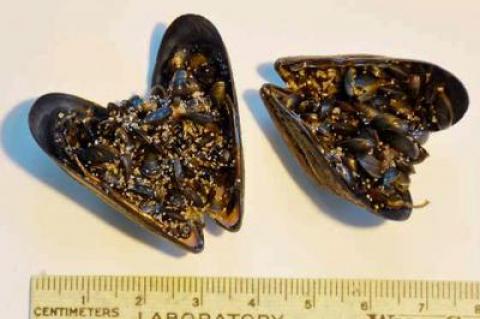 Nature Notes: Mussel Beach
Nature Notes: Mussel BeachOn Monday afternoon I went down to the ocean beach and walked between Bridgehampton and Sagaponack. There was the usual bunch of beachgoers enjoying the sun, but what I was there for was to examine the wrack line left by recent high tides and storms, such as the tropical cyclone Chris that brushed our shore last weekend.
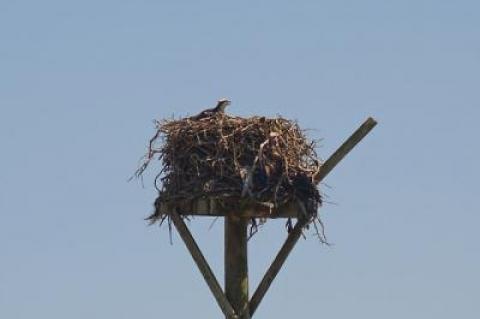 Nature Notes: Great Promise
Nature Notes: Great PromiseAfter one of the hottest, muggiest Fourths of July on record, we wondered what nature would serve up next. There was no relief the day after.
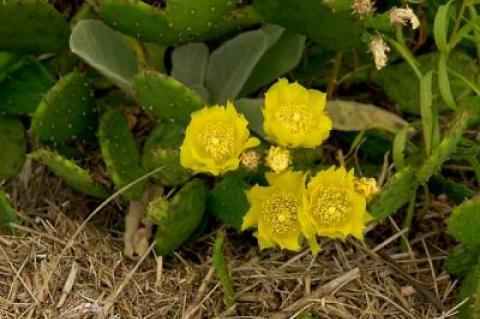 Nature Notes: Let It Be
Nature Notes: Let It BeTerry Sullivan called last week from Sag Harbor to tell me that the prickly pear cactus was in bloom along Long Beach Road’s south side. He also mentioned that PSEG has been putting up new utility poles. I’m a stone’s throw away, so I motored over and took a look. Indeed, at least 10 new poles had been erected, each with strange-colored horizontal members on top to which the electrical transmission wires were fastened.
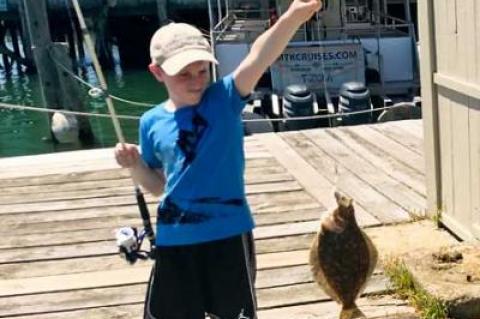 Out of the Deep Sleep
Out of the Deep SleepBack in March, I set out my lobster traps for the first time in about nine years. With various work commitments behind me, I finally had enough free time to exhume my gear from its extended deep sleep on dry land.
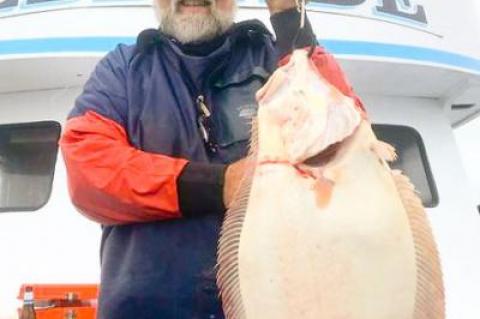 Fishing Takes Back Seat to Golf
Fishing Takes Back Seat to GolfLast week, other than taking my boat out at 4:30 a.m. on Saturday to for a quick check on my lobster traps (yes, I did capture enough for a dinner or two), I did not pick up a fishing rod. The reason was pretty simple, as I was hanging around the U.S. Open at Shinnecock Hills.
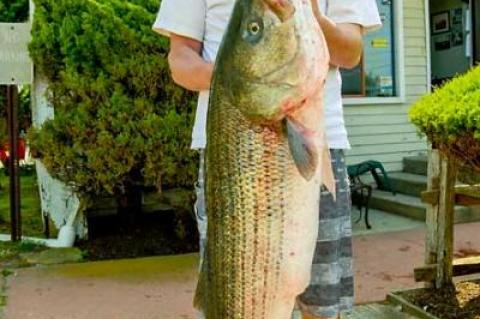 Giants Invade the Hamptons
Giants Invade the HamptonsA few weeks ago, I penned a story about two different types of boaters. The premise was that you either preferred to cruise under power or chose the quietness that a sailboat provides. With a few exceptions, it’s pretty black and white on this matter.
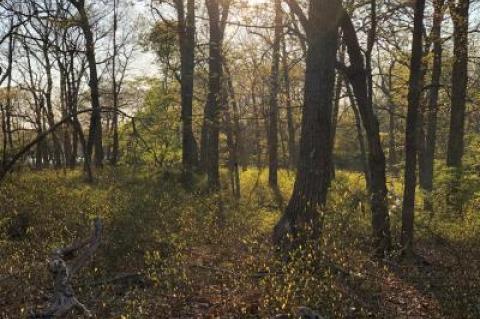 Nature Notes: Changes in Vegetation
Nature Notes: Changes in VegetationEastern Long Island owes much of its natural history to the eastern deciduous forest, an ecological life zone that stretches from the grasslands of the Midwest to the Atlantic Coast, from northern Florida into southeastern Canada. Of course, there are huge differences from one part of this forest zone to the next, and from the southern part to the most northern part.
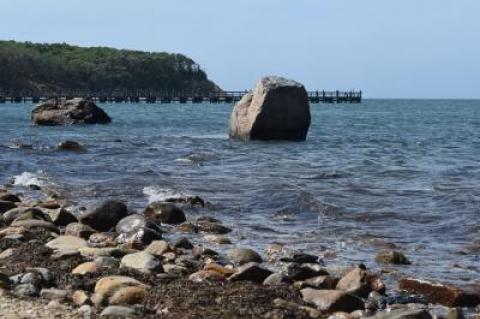 Nature Notes: Gift of the Glacier
Nature Notes: Gift of the GlacierThere are two Stony Hill Roads on the South Fork, one in Amagansett in East Hampton Town, the other in Noyac, in Southampton Town. How did they get their names? By chance? No! They got their names because of the presence of boulders left by the receding glacier more than 15,000 years ago.
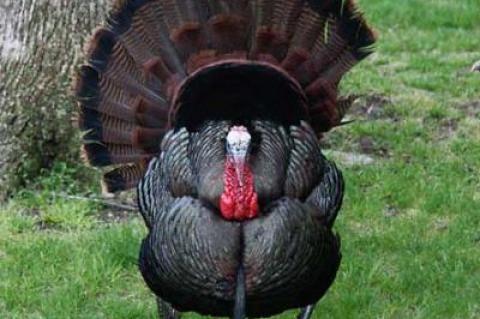 Nature Notes: It’s a Fowl Ball!
Nature Notes: It’s a Fowl Ball!In only 20 days, the daily photoperiod will start to wane. Perhaps that’s why almost all of nature is focused on reproducing. Osprey eggs are hatching. Crows are roaming the treetops looking for unguarded nestlings. On Saturday shortly after noon a screech owl up the block started singing his wavering whistle in full daylight. The first tropical storm hit the Florida panhandle on Memorial Day. Observers were quick to blame “global warming.” Hmmm. I wonder.
 Nature Notes: The Good, the Bad, and the Ugly
Nature Notes: The Good, the Bad, and the UglyNature itself, left alone without human interference, is what you might call wondrously beautiful in all respects. Even natural death has its positive side. Nothing goes to waste; everything is recycled. Then, humans came along and began to spoil it. Try as we may to recycle, not everything — many plastics, for example — is recyclable. Let’s face it, we’ve made one humongous mess of things and we have very little time before the lights go out to make it right again.
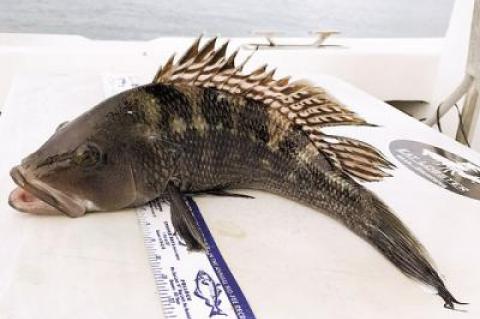 Sea Bass Saga Continues
Sea Bass Saga ContinuesThe sad saga surrounding the black sea bass season continues to frustrate anglers. At an Atlantic States Marine Fisheries Council meeting last week in Stony Brook, the group voted to adopt last year’s inequitable black sea bass quota for this upcoming season, which cuts New York’s black sea bass allocation compared to neighboring states, even though the black sea bass stock has rebounded and is currently 240 percent above target biomass.
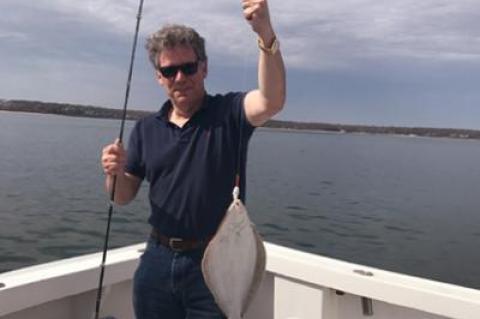 Now He’s Really Hooked
Now He’s Really HookedLast week’s surge of hot weather was much needed in so many ways. A number of popular pursuits like gardening, planting of crops, and fishing were all affected by the extended and painfully cold spring weather. Other than a trip or two to the lobster grounds, I never even considered wetting a line to go fishing. It was just too windy, cold, and damp most days. But the burst of heat changed all of that in a hurry.
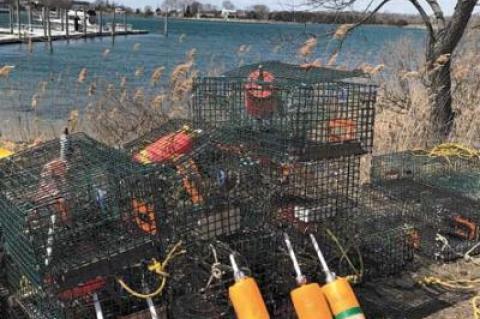 Lobster and Seals, Oh My!
Lobster and Seals, Oh My!Early Saturday morning, after sitting silently at my dock for almost three weeks due to the incessant cold and windy weather, my boat was finally freed from the dock lines for the first time this season.
 Nature Notes: Rites of the Seasons
Nature Notes: Rites of the SeasonsIt was pleasant last Thursday afternoon as I drove from Noyac to Southampton. I had just left Edge of Woods Road for David White’s Lane when I came upon about 50 gulls landing in a just-plowed strip on the west side of the road.
As our planet continues to heat up and sea level rises commensurately due to melting glacial water, we think about ways to survive, comfortably if possible, and one of these ways is to switch from gasoline and coal to forms of energy production that don’t require the burning of carbon-derived materials. We are making progress, but we have a long, long way to go.

